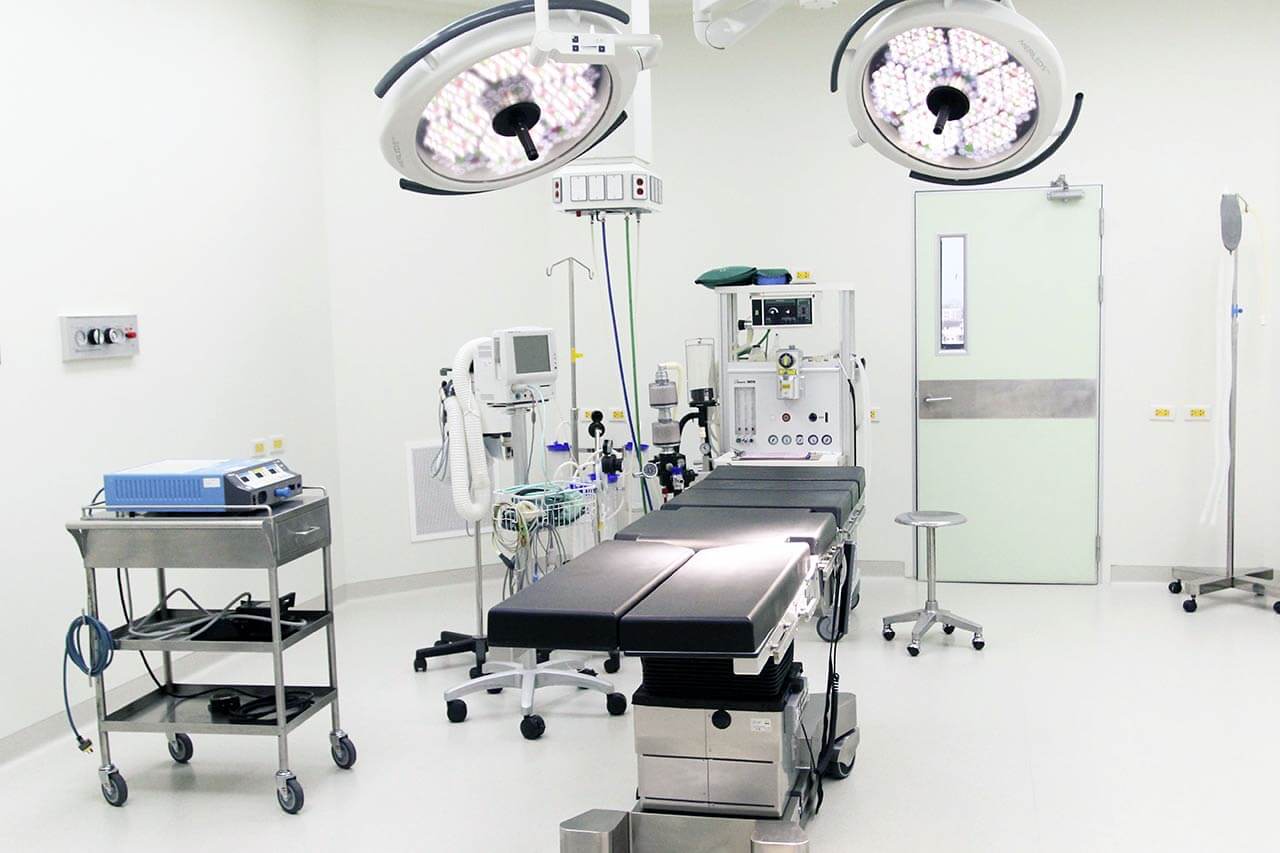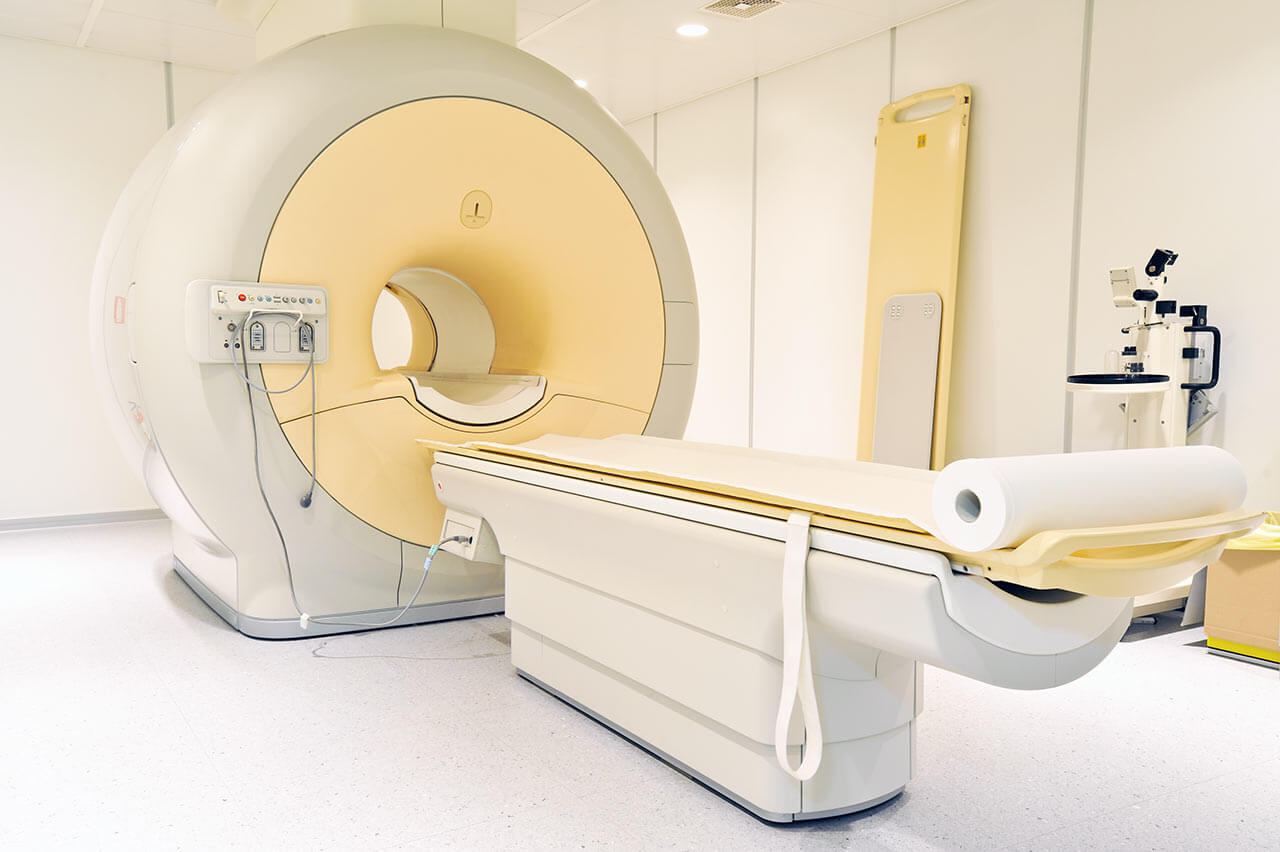
The program includes:
- Initial presentation in the clinic
- clinical history taking
- physical examination
- review of medical records
- laboratory tests:
- complete blood count
- general urine analysis
- biochemical analysis of blood
- indicators of inflammation (CRP, ESR)
- indicators of blood coagulation
- X-ray examination of the hip
- MRI scan of the hip
- preoperative care
- hip replacement (hip endoprosthesis)
- symptomatic treatment
- control examinations
- physiotherapeutic procedures
- orthopedic appliances
- the cost of essential medicines and materials
- nursing services
- full hospital accommodation
- explanation of future recommendations
How program is carried out
Preliminary preparation for hip replacement includes quitting smoking and drinking alcohol; cancelling non-steroidal anti-inflammatory drugs (diclofenac, ibuprofen); cancelling anticoagulants (warfarin); normalization of body mass, if possible.
Preoperative examination, including consultation with an anesthesiologist and necessary related specialists, takes 1-2 days. According to its results, the most suitable endoprosthesis is selected.
Hip replacement. The operation is performed under general anesthesia. The patient lies on his side, the affected leg is bent and fixed in this position. The surgeon makes an incision 15-20 cm long, minimally traumatizing the muscles and nerve endings. Through this incision, miniature instruments are inserted to remove the damaged joint structures. Healthy bone is adjusted for further reliable implant fixation.
The surgeon installs a femoral stem in the center of the upper part of the femur. Ball-shaped head of the joint is fixed on it. The surgeon also implants a special liner that facilitates movement of the leg and protects the structures of the prosthesis. After the primary fixation of the prosthesis components, the doctor assesses the joint range of motion, as well as the length and symmetry of the lower limb.
The implant is fixed with cement or cementless method. The doctor treats the operating field with antiseptics, conducts its final revision and sutures the wound layer by layer. A temporary drainage is installed in the joint, and a bandage is applied on top.
Postoperative care. During the first day after the intervention the patient stays in the intensive care unit, under round-the-clock medical supervision. After that, with a smooth course of the postoperative period, the patient is transferred to a regular ward and the drains are removed. The range of motion expands gradually, from light toes movements to walking. Walking with the use of walking aids is allowed in 3-5 days after the operation.
Required documents
- X-ray examination of the hip joints
- MRI scan of the hip joints, if available
Service
You may also book:
 BookingHealth Price from:
BookingHealth Price from:
About the department
The Department of Traumatology and Orthopedics at the Hospital Schwabing Munich provides the full range of conservative and surgical treatment for patients with injuries and diseases of the musculoskeletal system of any severity. The department enjoys a status of a supraregional Trauma Center, and therefore it has all the necessary resources for high-quality medical care for injuries of any severity, including sports ones. In addition, the department is certified by the German Trauma Society as a Geriatric Trauma Centre. Should surgical treatment be required, the doctors will use innovative computer-assisted navigation surgical techniques to ensure maximum safety for their patients. The department admits more than 1,700 patients annually. The patients' health is in the good hands of a competent medical team consisting of 21 doctors and 30 nursing staff members. All medical services correspond to the current clinical protocols. The Chief Physician of the department is Dr. med. Stephan Gass.
The traumatologists working in the department have many years of clinical experience in the treatment of all types of injuries of the musculoskeletal system, ranging from injuries caused by accidents at work, injuries caused by road traffic accidents, sports injuries to injuries sustained during leisure time. The department can boast of a special competence in the field of trauma treatment in elderly patients. Whenever possible, preference is given to conservative treatment methods, but if the consequences of trauma require an invasive intervention, the patient can undergo the required surgical procedure.
The priority area of work of the department's medical team is hip, shoulder and elbow replacement surgery. The orthopedic surgeons specialize in partial and total joint replacement surgery, as well as successfully perform revision interventions to replace previously implanted endoprostheses. When performing such operations, the doctors use cutting-edge navigation systems to ensure the most accurate fixation of the endoprosthesis and, accordingly, effective restoration of mobility. The joint replacement surgery is performed using minimally invasive techniques, which contributes to the fastest postoperative recovery of the patient. In addition, the specialists use in their clinical practice only high-quality endoprostheses with a long service life.
The department's doctors quite often admit patients with spinal injuries for treatment. In most cases, when performing surgical procedures on the spine, neurosurgeons are also involved. Of particular interest for the department's doctors are open and minimally invasive operations on the spine to treat fractures, replace vertebral bodies, as well as perform kyphoplasty and vertebroplasty for osteoporotic fractures. An integral part of spinal surgery is the use of computer-assisted navigation systems that allow the surgeon to avoid damage to vital anatomical structures of the spine and spinal cord.
The department's range of medical services includes:
- Conservative and surgical treatment of injuries caused by accidents at work, injuries caused by road traffic accidents, sports injuries, injuries sustained during leisure time, injuries in lederly patients
- Partial and total hip, shoulder and elbow replacement surgery, including revision surgery to replace previously implanted endoprostheses
- Knee arthroscopy
- Cruciate ligament replacement surgery
- Meniscus repair
- Osteosynthesis using arthroscopic techniques
- Shoulder arthroscopy
- Surgery to treat rotator cuff injuries
- Surgery to treat injuries of the upper part of the articular lip of the scapula
- Bankart shoulder repair procedure
- Ankle and elbow arthroscopy
- Correction of the consequences of injuries
- Treatment of ankle and elbow degenerative lesions
- Spinal surgery
- Treatment of fractures of all segments of the spine using minimally invasive and open surgical techniques, including vertebral body replacement
- Kyphoplasty and vertebroplasty for osteoporotic fractures, as well as for pain due to neoplasms
- Pelvic surgery
- Treatment of pelvic ring and acetabular fractures, including minimally invasive surgery for osteoporotic fractures
- Other therapeutic options
Curriculum vitae
Higher Education and Professional Career
- 1990 - 1992 Study of Human Medicine at Saarland University.
- 1992 - 1993 Study of Human Medicine at the Albert Ludwig University of Freiburg.
- 1993 - 1997 Study of Human Medicine at Ludwig and Maximilian University of Munich.
- 1997 - 1999 Work in the Department of Surgery, University Hospital Grosshadern.
- 1999 - 2002 Work in the Department of Traumatology and Orthopedics at the Hospital Schwabing Munich.
- 2002 - 2003 Work in the Department of Abdominal and Thoracic Surgery, Hospital Neuperlach.
- Since 2004 Physician in the Department of Traumatology and Orthopedics at the Hospital Schwabing Munich, and since 2020 – Chief Physician of the same department.
Qualifications
- Board certification in surgery.
- Specialization in traumatology.
- Additional qualifications in emergency medicine.
- Additional qualifications in special traumatology.
Clinical Interests
- Geriatric traumatology.
- Hip replacement surgery.
- Spinal surgery.
- Surgical treatment of pelvic fractures.
- Special traumatology.
Memberships in Professional Societies
- German Society of Traumatology.
- Professional Association of German Surgeons.
Photo of the doctor: с) München Klinik Schwabing
About hospital
The Hospital Schwabing Munich is one of the oldest medical facilities in the Schwabing region with a history of over 100 years. The hospital is proud of the excellent state-of-the-art equipment, modern infrastructure, highly professional medical personnel and location in a picturesque park area. The medical complex is the academic hospital of the University Hospital of Ludwig Maximilian University of Munich and the University Hospital Rechts der Isar Munich, therefore, it offers unique innovative diagnostic and treatment methods. The treatment can be provided both on an inpatient and outpatient basis. The work of the medical center is based on an individual approach to each clinical case, as well as on the strictest adherence to high standards of quality, hygiene and safety.
The hospital has a large number of beds for patient hospitalization – more than 700 beds. The medical facility admits over 125,000 patients for diagnostics and treatment, and this figure grows steadily every year, which indicates the authority of the hospital not only in the region, but also throughout the country. In addition, the medical center often admits foreign patients for medical treatment.
The hospital presents almost all the main areas of modern medicine, including oncology, surgery, gynecology, gastroenterology, endocrinology, diabetology, otolaryngology, pulmonology, thoracic surgery, orthopedics, traumatology, neurosurgery, etc. In addition, the specialists of the hospital admit young patients for treatment, providing them with proper medical care.
Particular attention should be given to the competent team of doctors who have vast clinical experience, thanks to which they provide patients with effective treatment even in particularly complex clinical cases. According to the prestigious Focus magazine, many doctors of the clinic have been repeatedly ranked among the best German specialists. The experts also take care of the patients' comfort during treatment, surround them with care and show a humane attitude, supporting patients on their way to recovery.
Photo: (с) depositphotos
Accommodation in hospital
Patients rooms
The patients of the Hospital Schwabing Munich live in comfortable single, double and triple rooms with a modern design. The patient rooms have everything necessary for maximum comfort of patients. Each patient room has an ensuite bathroom with shower and toilet. All patient rooms are equipped with a telephone, which is available for an extra fee via a special card. The standard room furnishings include an automatically adjustable bed, a bedside table, a wardrobe, a table and chairs for receiving visitors. Wi-Fi is also available in the patient rooms.
If desired, the patient can stay in the enhanced comfort patient room, which additionally includes a safe, a minifridge and upholstered furniture.
The hospital also has a library with a large assortment of books, magazines, CDs and DVDs, a shop, a hairdressing saloon and a cafe where the patient can enjoy tasty snacks or a cup of hot tea, aromatic coffee and soft drinks.
Meals and Menus
The patients of the hospital are offered tasty and healthy three meals a day: breakfast, lunch and dinner. All dishes are cooked from fresh food available in the region. Breakfast and dinner are served buffet style, while for lunch the patient has a choice of three menus.
If you are on a specific diet for some reason, you will be offered an individual menu. Please inform the medical staff about your dietary preferences prior to the treatment.
Further details
Standard rooms include:
Religion
The religious services are available upon request.
Accompanying person
During the inpatient program, the accompanying person can live with the patient in a patient room or a hotel of his choice. Our managers will help you choose the most suitable option.
Hotel
During the outpatient program, the patient can stay at the hotel of his choice. Our managers will help you choose the most suitable option.




